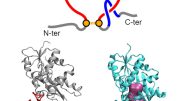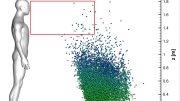
Recent research indicates that pesticides and herbicides used in farming could be contributing to higher rates of Parkinson’s disease in certain U.S. regions, emphasizing the need for more in-depth studies and potential reduction in pesticide usage to mitigate disease risk.
A preliminary study recently presented at the American Academy of Neurology’s 76th Annual Meeting has linked pesticides and herbicides used in farming to Parkinson’s disease in the Rocky Mountain and Great Plains region of the country
“We used geographic methods to examine the rates of Parkinson’s disease across the United States and compared those rates to regional levels of pesticide and herbicide use,” said study author Brittany Krzyzanowski, PhD, of Barrow Neurological Institute in Phoenix, Arizona. “Our methods enabled us to identify parts of the nation where there was a relationship between most pesticides and Parkinson’s disease and subsequently pinpoint where the relationship was strongest so we could explore specific pesticides in that region. In the Rocky Mountain and Great Plains region, we identified 14 pesticides associated with Parkinson’s disease.”
Krzyzanowski said the region included parts of Colorado, Idaho, Kansas, Montana, Nebraska, Nevada, New Mexico, North Dakota, Oklahoma, South Dakota, Texas, Utah and Wyoming.
Findings
The study involved a review of records from the 21.5 million people enrolled in Medicare in 2009 to determine the rate of Parkinson’s disease for various regions across the country. The researchers then looked for a possible relationship between these rates of Parkinson’s and the use of 65 pesticides.
They found that the pesticides and herbicides simazine, atrazine, and lindane had the strongest relationship with Parkinson’s disease. When researchers divided counties into 10 groups based on exposure to pesticides, people living in the counties with the highest amount of application of the herbicide simazine were 36% more likely to have Parkinson’s disease than people living in the counties with the lowest amount of exposure.
In the counties with the highest exposure to simazine, 411 new Parkinson’s disease cases developed per every 100,000 people compared to 380 cases in the counties with the lowest exposure.
For the herbicide atrazine, those exposed to the highest amount were 31% more likely to have Parkinson’s disease than those with the lowest exposure. For the insecticide lindane, those with the most exposure were 25% more likely to have the disease.
In the counties with the highest exposure to atrazine, 475 new Parkinson’s disease cases developed per every 100,000 people compared to 398 cases in the counties with the lowest exposure. In the counties with the highest exposure to lindane, 386 new Parkinson’s disease cases developed per every 100,000 people compared to 349 cases in the counties with the lowest exposure.
Concerns and Limitations
The results remained the same when researchers adjusted for other factors that could affect the risk of Parkinson’s disease, such as air pollution exposure.
“It’s concerning that previous studies have identified other pesticides and herbicides as potential risk factors for Parkinson’s, and there are hundreds of pesticides that have not yet been studied for any relationship to the disease,” Krzyzanowski said. “Much more research is needed to determine these relationships and hopefully to inspire others to take steps to lower the risk of disease by reducing the levels of these pesticides.”
A limitation of the study was that it relied on the use of county-level estimates since person-level information on pesticide exposure was not available for the study population.
Meeting: 2024 American Academy of Neurology’s 76th Annual Meeting
The study was supported by the Michael J. Fox Foundation for Parkinson’s Research.









Hey, there is nothing in the Constitution or the laws of the land that prohibits corporations from killing their customers as long as they do it slowly. After all, making profit is more important than human lives.
How funny. You work under the assumption that this had to do with profit rather than antiquating farming practices.I’m curious, did you not think these same or highly similar compounds aren’t used elsewhere in the world? Farming has been dependant on pesticides & synthetic fertilizers for over a century to feed the world. At least our constitution & laws create a process where remedy can be sought eventually. You want to see a horror show look at how badly the soviets disabused satellite territories like Ukraine Kazakhstan & Uzbekistan with their experimental farming.
A course in macroeconomics might shift your overview to bring things into context. I’d suggest at least familiarizing yourself with it’s general principles before launching your next broadside so you may at least have an *informed* critique.
Could also look at occupations to see if farmers and gardeners had more chance of getting Parkinson’s.
It was discovered decades ago that chemists and chemical engineers had a life span about a decade shorter than other professions. Therefore, the problem probably isn’t just this specific pesticide.
“…, 411 new Parkinson’s disease cases developed per every 100,000 people compared to 380 cases in the counties with the lowest exposure.”
Are an additional 31 cases per 100,000, statistically significant at a 2-sigma probability? What is the uncertainty associated with the two numbers 411 and 380?